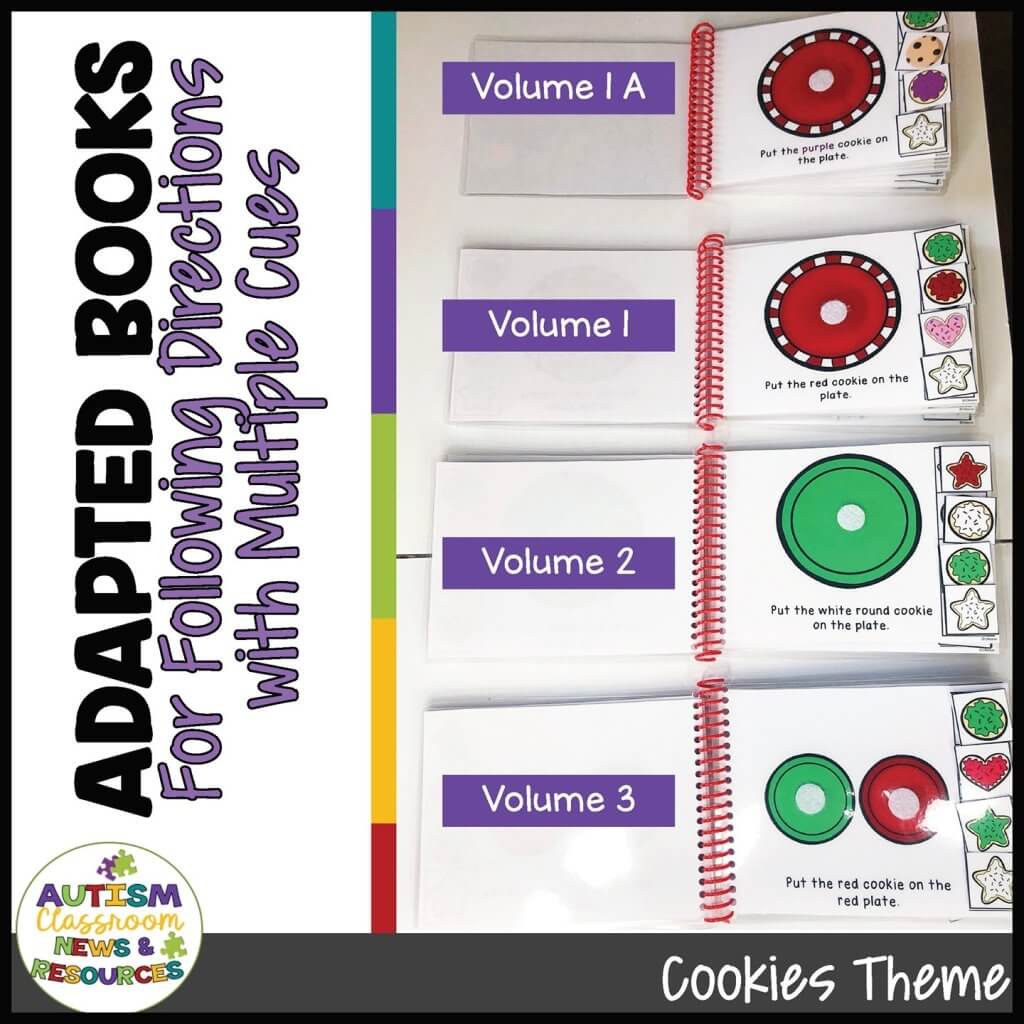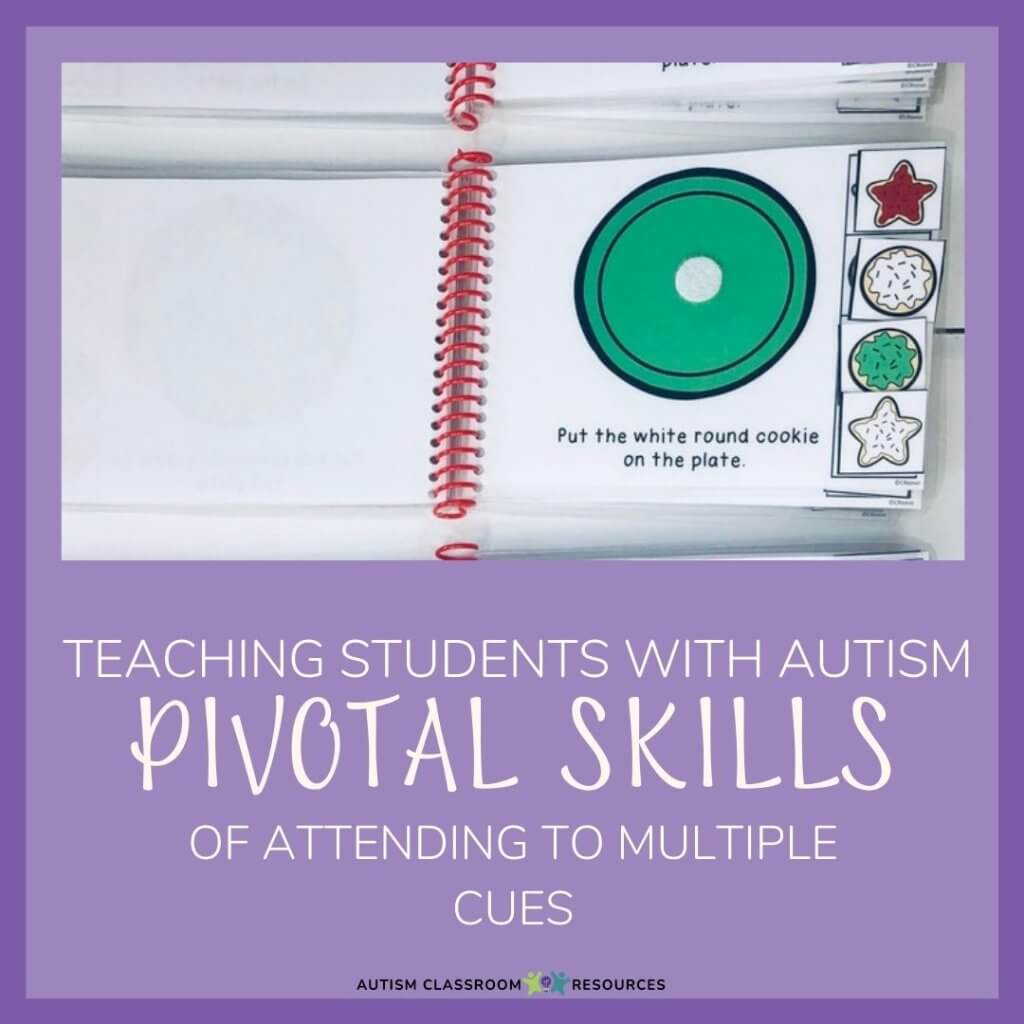Sharing is caring!
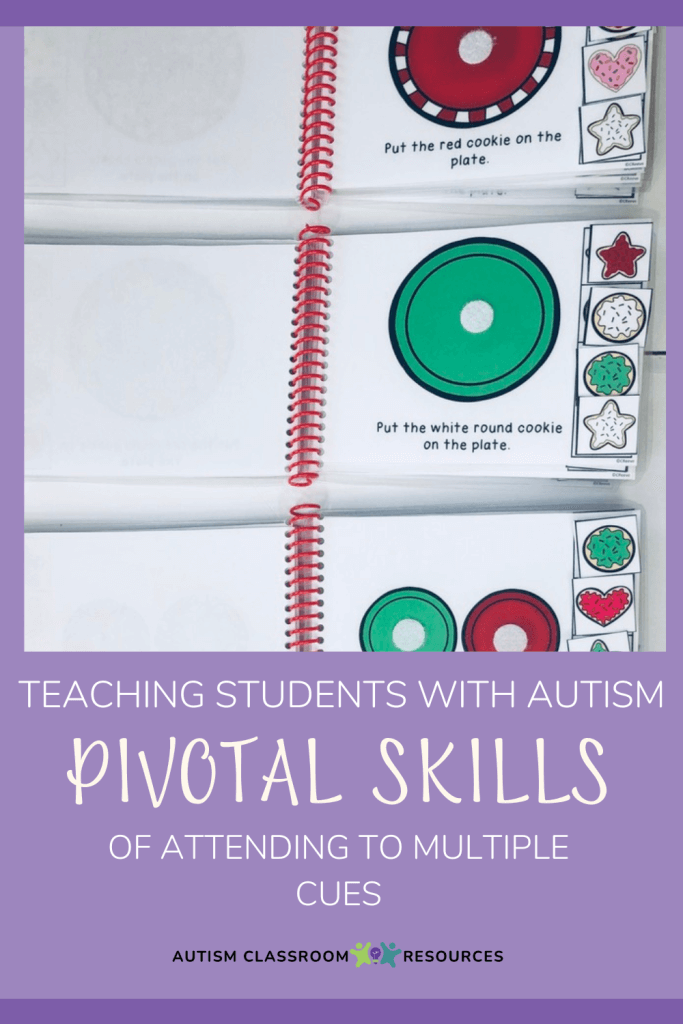
If you teach students with autism, you probably understand some of the needs for specialized instruction to make sure our students can effectively use what we teach. We tend to focus instruction frequently on following directions and then expanding the number of instructions (e.g., 1-step, 2-step).
In addition, we hopefully are teaching students with autism to follow conditional instructions (e.g., if you are wearing shorts, line up) because these are often used in general education classrooms as well as throughout life. The express line at the supermarket is a good real-life example–if you have less than 10 items, use this line.
The Need for Teaching Students with Autism Pivotal Skills
However, one of the things that research has shown us about teaching students with autism is that certain behaviors or skills are essential to opening doors for further and faster learning. The. area of research that has looked at this most is called Pivotal Response Training.
Pivotal Response Training (PRT) is an evidence-based approach that takes the systematic approach of discrete trials and embeds that system into the natural environment. One of the foundations of PRT is the concept that specific skills can serve as pivotal to learning to learn.
Essentially they are skills that allow the student to learn more independently without every single skill having to be taught explicitly. Like the enabling goals I talked about with IEPs, these are skills that open doors for individuals and allow them to learn from their environment. These skills greatly enhance their rate of learning because they don’t need someone to deliver instruction for each tiny skill or step.
Responding to Multiple Cues is a Pivotal Skill
Responding to multiple cues is considered to be a pivotal skill for teaching students with autism. This simply means that the student can focus on more than one element of an item, interaction or task at a time.
It’s part of what makes up joint attention. Joint attention is when students are able to look at a speaker and to an object or activity to which the speaker is referring. For instance, they can look at and attend to the teacher and the board jointly to gain the visual and the auditory information.
Joint attention is also considered to be a critical early learning skill for children with autism because it makes up the beginning of social interactions. Think about young children when they begin to learn to point? They point at everything. And each time, they look at Mom and then share that visual experience by shifting their attention between the item.
Why Responding to Multiple Cues is Important in Teaching Students with Autism
Typically children learn to do this shifting of attention and responding to multiple cues as part of typical development. However, many students with autism benefit from explicit instruction on how to attend to multiple materials and things in their environment simultaneously. Being able to shift their attention and focus on more than 1 thing at a time means they open up the world of learning to include more information. And they begin to be able to integrate that information together.
For instance, if a student can’t reference more than 1 element in an academic environment, they can look at their teacher or look at their work on their desk. But they can’t attend to both.
Similarly, if they are looking at materials, they can’t identify pictures or words with more than 1 relevant element. For instance, they could find words that begin with P but not one that begins with P and ends with K.
This impacts their language learning as well because they can’t follow directions that have 2 relevant elements to recognize to put 1 thing from a selection onto a specific place. So, telling them to get the green pencil and put it on Sarah’s desk may be problematic. Hence, providing specific instruction in this skill can be really helpful at expanding understanding and processing information.
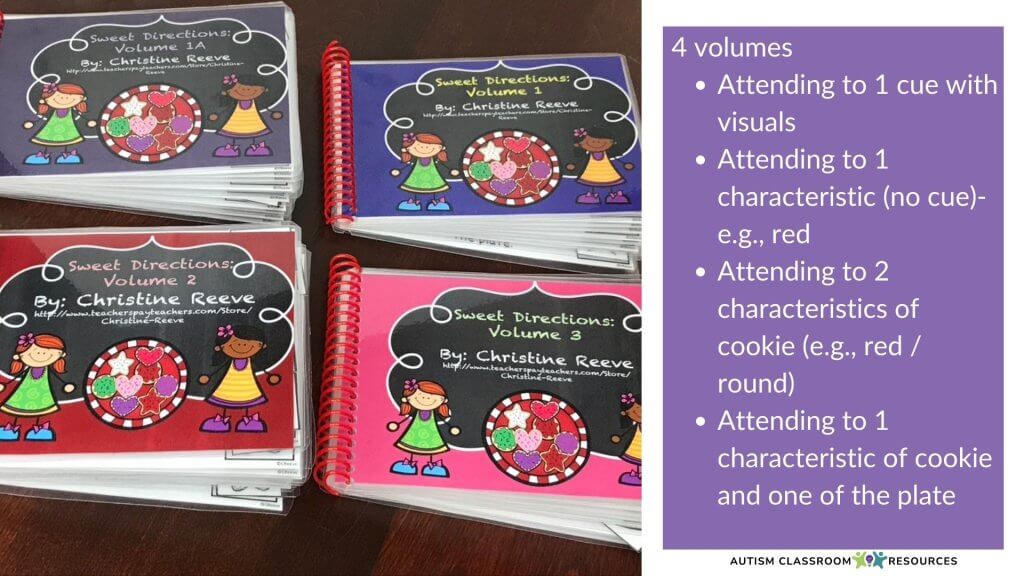
How to Teach Attention to Multiple Cues
One way for teaching students with autism this pivotal skill is to set up situations where you gradually change up the number of elements that the student needs to attend to. For instance, you can give directions to start that only involve 1 element of a material (e.g., all blue pens). Once they can follow directions with that, change it so there are green and blue pens. Then add in other element to the instruction (get the green pen and put it on the blue table-when there are different color tables).
To make this type of instruction easier, I created the Sweet Directions Interactive Book Set for Attending to Multiple Cues. They are already set up with scaffolded instruction within the materials of the books. The books are differentiated to work with early learners of the skills and increase complexity through the volumes as the student masters the skill.
Using the Sweet Directions Books for Teaching Students with Autism
If you are teaching students with autism, these books have everything set up for you to teach the beginnings of this skill. Use the 4 books in morning meeting, circle time, or group story times as interactive books that reinforce concepts that your students are working on or have mastered. Or use them individually to introduce the skill of attending to multiple cues.
When I use them, I first review the title and the front and back of the book. We talk about the author and I have students be the page turners. All of those steps are just something I do for basic literacy more than for teaching this skill, but it’s one of the elements I love about interactive books.

The books can also be used in discrete trials or Pivotal Response Training instruction 1-1 or in small groups to explicitly teach responding to multiple cues. For explicit instruction, presenting the tasks in a sequential order will facilitate learning using reinforcement for
correct responding. The books are set up so that teachers can use errorless teaching, to prevent errors, or error correction as is appropriate for the students.
In addition there is a scaffolding of steps in order to use the books. This will help you teach the skill from the beginning with small steps between for smooth, successful and most reinforcing way for the studentsl
What’s Included:
The following is a list of the tools and tasks included in he books.
- Volume / Book 1: Focuses on attending to 1 characteristic of materials (red cookie)
- Volume / Book 1A: Is the same as book 1 but with added visual cues in the text (e.g., the word red is colored red)
- Volume / Book 2: Focuses on attending to 2 characteristics of materials (red, round cookie)
- Volume / Book 3: Focuses on a characteristic of the cookie (color and shape) as well as a characteristic (red or green) of the plate it is put on.
- Extension activities and differentiation suggestions
- Cookie manipulatives
- In addition to the volumes of interactive books, I included a data sheet and teaching program with the steps for teaching the skill systematically across the books.
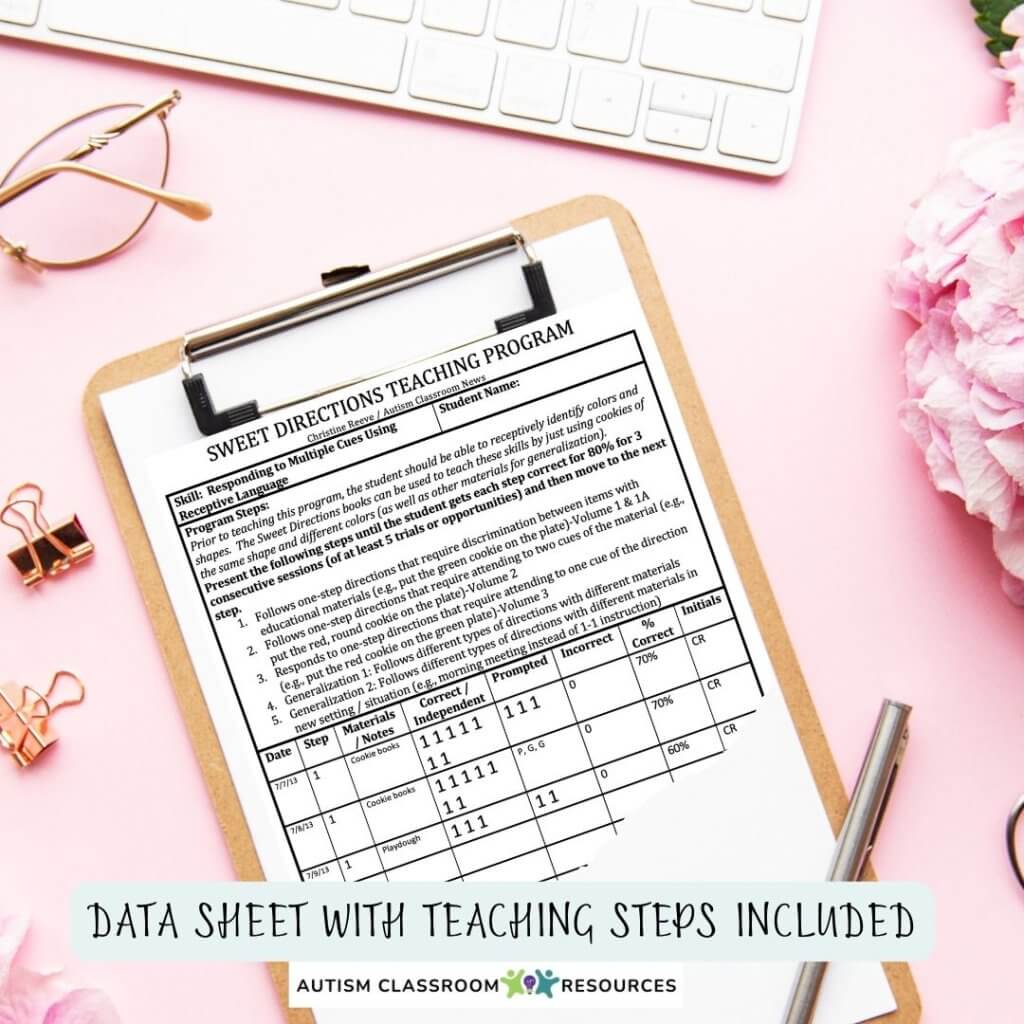
Handy IEP Goals for Teaching Students with Autism to Attend to Multiple Cues
Finally, want to teach these skills to your students? I’ve included some IEP goals and objectives that could be modified to fit your student’s needs.
GOAL:
Max will follow different types of directions with different types of materials requiring attention to at least 2 cues within the direction (e.g., put the green, round cookie on the plate or put the green cookie on the red plate) with 80% accuracy daily for one week in at least 2 settings during the school day by the end of the IEP period [insert date].
Objective 1:
Max will follow a one-step direction that requires 1 discrimination between at least 4 similar items to complete it (e.g., put the green cookie on the plate) with 80% accuracy daily for 3 consecutive days by the end of the first quarter [insert date].
Objective 2:
Max will follow one-step directions that require attending to two cues of the material (e.g., put the red, round cookie on the plate) when given a field of at least 4 choices with 80% accuracy daily for 3 consecutive days by the end of the second quarter [insert date].
Objective 3:
Max will follow one-step directions that require attending to one differentiation among the material to be chosen and differentiating where to place it (e.g., put the red cookie on the green plate) with 80% accuracy daily for 3 consecutive days by the end of the third quarter [insert date].
Interested in Teaching Your Students with Autism How to Follow Multiple Cues?
